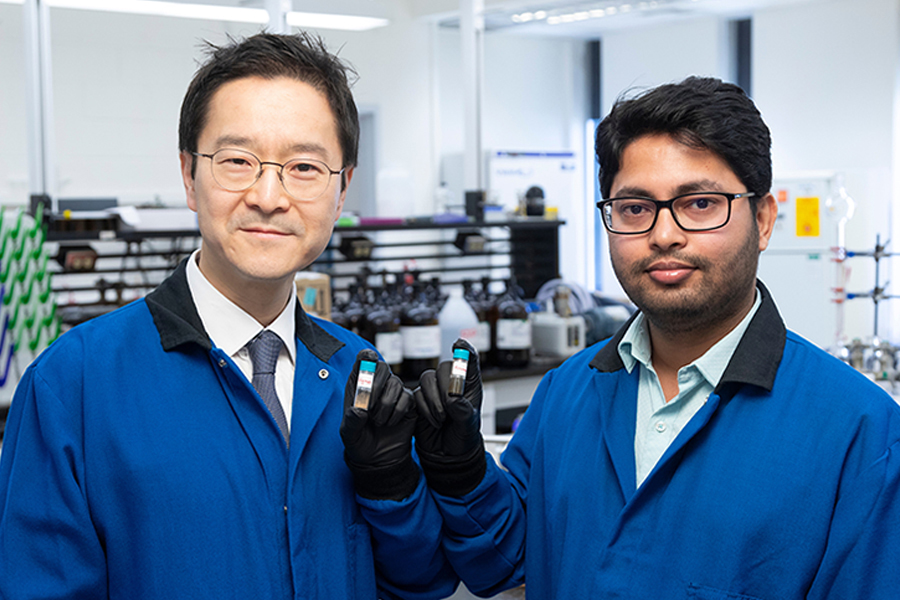By Bill Wellock, Florida State University News
A new, biomass-based material developed by FAMU-FSU College of Engineering researchers can be used to repeatedly capture and release carbon dioxide.
The material is primarily made from lignin, an organic molecule that is a main component of wood and other plants, and it can take up carbon dioxide (CO2) from concentrated sources or directly from the air. The research was published by Advanced Materials.
“The beauty of this work is the ability to precisely control the capture and release of CO2 without high pressure or extreme temperatures,” said study co-author Hoyong Chung, an associate professor in the FAMU-FSU College of Engineering. “Our testing showed that this material’s structure stayed the same even after being used multiple times, making this a promising tool for mitigating carbon emissions.”
In previous research, Chung’s team developed a lignin and CO2-based polymer that represented a potential alternative to traditional petroleum-based plastic. This paper takes that research further, showing the possibility of reversing the process and of reusing the material to absorb CO2 again in the future.
Because it is found in plants, lignin is abundant and cheap, and it is often harvested as a byproduct from wood processing. Scientists are working to find new ways to use this natural resource.

One gram of the material developed by Chung’s team captured 47 milligrams — about 5% of the weight of the original material — of CO2 from a concentrated source and 26 milligrams from exposure to ambient air. The absorbed CO2 can be permanently sequestered, or it can be released for use in various applications, such as manufacturing, agriculture and others.
Researchers were surprised by the release mechanism. While using nuclear magnetic resonance spectroscopy to analyze a sample, they saw bubbles appear when the sample was heated.
“That sparked our curiosity,” Chung said. “What’s going on here? Why do we see these little bubbles every time we try to analyze this polymer?”
Further investigation revealed that heat was causing the material to release CO2. The researchers investigated the reaction and found that by controlling the heat applied to the sample, they were able to control the amount of CO2 released. They also showed the possibility of using that captured gas in other reactions.
It only takes temperatures of about 60 degrees Celsius at normal atmospheric pressure to release the CO2, meaning high temperatures and pressures aren’t necessary for the reuse process. This CO2 release temperature can be increased or decreased for different applications.
“This is like a sponge for CO2, absorbing it, releasing it and drying up so it can capture more,” Chung said. “It’s fascinating to see what is possible with this material.”
Postdoctoral researcher Arijit Ghorai was the lead author of the study.
This work was supported by the U.S. Department of Agriculture National Institute of Food and Agriculture.
Visit the Chung Research Group website for more information about this and other ongoing work.
This piece was originally published at https://news.fsu.edu/news/science-technology/2024/08/26/power-of-plants-famu-fsu-college-of-engineering-researchers-develop-biomass-based-polymer-that-can-absorb-and-release-carbon-dioxide/.
Sign up for The Invading Sea newsletter by visiting here. If you are interested in submitting an opinion piece to The Invading Sea, email Editor Nathan Crabbe at ncrabbe@fau.edu.



